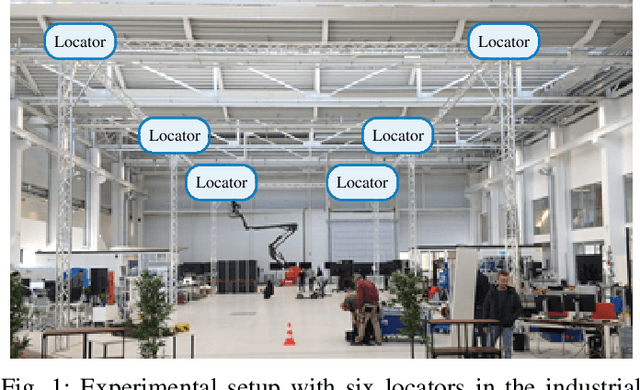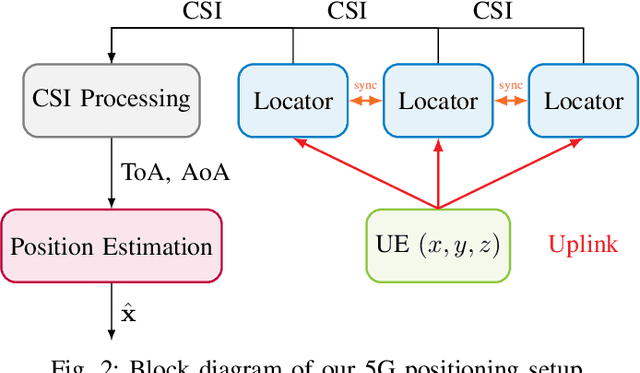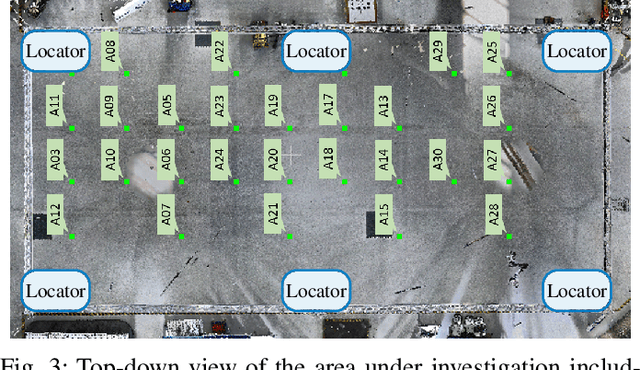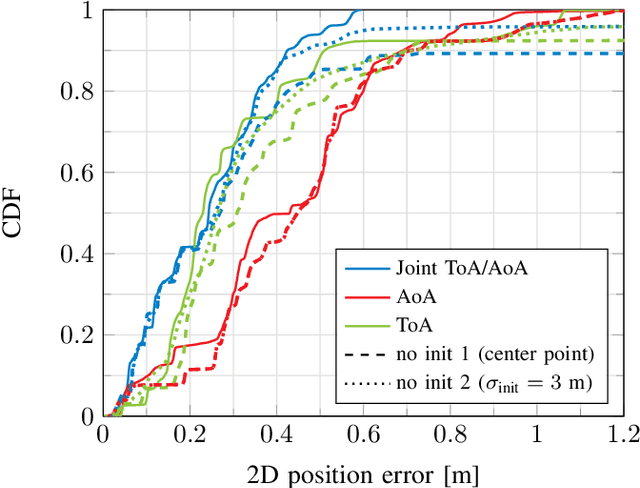Veli-Matti Kolmonen
Probabilistic 5G Indoor Positioning Proof of Concept with Outlier Rejection
Jul 18, 2022



Abstract:The continuously increasing bandwidth and antenna aperture available in wireless networks laid the foundation for developing competitive positioning solutions relying on communications standards and hardware. However, poor propagation conditions such as non-line of sight (NLOS) and rich multipath still pose many challenges due to outlier measurements that significantly degrade the positioning performance. In this work, we introduce an iterative positioning method that reweights the time of arrival (ToA) and angle of arrival (AoA) measurements originating from multiple locators in order to efficiently remove outliers. In contrast to existing approaches that typically rely on a single locator to set the time reference for the time difference of arrival (TDoA) measurements corresponding to the remaining locators, and whose measurements may be unreliable, the proposed iterative approach does not rely on a reference locator only. The resulting robust position estimate is then used to initialize a computationally efficient gradient search to perform maximum likelihood position estimation. Our proposal is validated with an experimental setup at 3.75 GHz with 5G numerology in an indoor factory scenario, achieving an error of less than 50 cm in 95% of the measurements. To the best of our knowledge, this paper describes the first proof of concept for 5G-based joint ToA and AoA localization.
* Correction of small error in Eq. (1) of accepted 2022 Joint European Conference on Networks and Communications & 6G Summit (EuCNC/6G Summit) paper, which has no impact on the final results
Experimental Study on Probabilistic ToA and AoA Joint Localization in Real Indoor Environments
Feb 22, 2021



Abstract:In this paper, we study probabilistic time-of-arrival (ToA) and angle-of-arrival (AoA) joint localization in real indoor environments. To mitigate the effects of multipath propagation, the joint localization algorithm incorporates into the likelihood function Gaussian mixture models (GMM) and the Von Mises-Fisher distribution to model time bias errors and angular uncertainty, respectively. We evaluate the algorithm performance using a proprietary prototype deployed in an indoor factory environment with infrastructure receivers in each of the four corners at the ceiling of a 10 meter by 20 meter section. The field test results show that our joint probabilistic localization algorithm significantly outperforms baselines using only ToA or AoA measurements and achieves 2-D sub-meter accuracy at the 90%-ile. We also numerically demonstrate that the joint localization algorithm is more robust to synchronization errors than the baseline using ToA measurements only.
 Add to Chrome
Add to Chrome Add to Firefox
Add to Firefox Add to Edge
Add to Edge